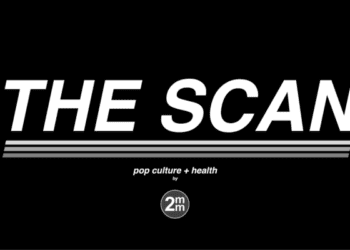Youth weapon violence linked to psychological consequences
1. One of 4 U.S. children has either directly experienced or witnessed violence involving a weapon.
2. Children who were victimized involving a weapon were more likely to experience symptoms of depression, anxiety, anger, and aggression.
Study Rundown: Youth violence and homicide are significant problems in the U.S. Previous research has shown that individuals who have experienced multiple episodes of violence are more prone to adverse developmental outcomes. There is a current need to understand how weapon use in these incidents may be linked to poly-victimization (individuals who experience >7 victimization types, e.g. sexual assault, bullying, physical abuse, etc.). Authors of the current study examined the prevalence of weapon involvement in youth victimization and its consequences. Results indicated that 1 in 4 children had directly experienced or witnessed an episode of violence involving a weapon. These children reported higher rates of trauma symptoms and life adversity, and they were more likely to be poly-victims and to carry a weapon themselves. This study may be limited by the willingness of participants to disclose episodes of violence. Nonetheless, these findings may urge providers to screen all children for weapon exposure and to encourage proper gun safety regulations in the home.
Click to read the study, published today in Pediatrics
Relevant Reading: 10 leading causes of injury deaths by age group highlighting violence-related injury deaths
Study Author, Dr. Kimberly J. Mitchell, PhD, talks to 2 Minute Medicine: Crimes Against Children Research Center, University of New Hampshire.
“More than 1 in 4 children in the U.S. are exposed to violence involving a weapon, either as witnesses or direct victims. This makes weapon violence a bigger problem than suicidal ideation, sexual victimization, and caregiver maltreatment. The collateral damage from such violence extends well beyond the “target” victim. Indeed, witnessing violence has just as many traumatic psychological consequences for kids as direct victimization. Sometimes what people describe as “witnessing” involves actual physical danger or injury to children. We need to improve safety practices around firearm and other weapon usage. Pediatricians can play a critical role in such efforts. Gun safety recommendations, such as trigger locks, can be part of regular well-child pediatric visits. Another high priority in which pediatricians can play a role focuses on the child as witness to weapon-involved violence. Screening for weapon exposure should be a standard practice for children receiving services and treatment for victimization.”
In-Depth [cross-sectional study]: A total of 4114 youth, ages 2 to 17, from the Second National Survey of Children’s Exposure to Violence were included for analysis. Telephone interviews were conducted with children ages 10-17 and caregivers of children ages 2-9. The Juvenile Victimization Questionnaire was used to measure youth victimization. Researchers also collected information about nonviolent traumatic events, mental health status, weapon environment, and victimization incident specific characteristics. Direct or witnessed victimizations were experienced in 26.5% of participants and were significantly more common in boys (23.9% vs. 18.4%) and youth from lower socioeconomic households. Youth who reported weapon-involved victimizations were more likely to be poly-victims within the last year, to experience high life adversity, and to have trauma symptoms. 3.1% of youth reported high lethality risk weapon victimization (i.e. with guns and knives). Furthermore, poly-victims, youth with high trauma symptoms, those with peers who carried weapons, personal weapon carrying, and youth from non-traditional families were more likely to report high lethality risk weapon victimization. Lastly, victimization with a weapon was significantly associated with depression, anxiety, and anger/aggression symptoms in all ages (p ≤ .01 for all).
Image: PD
©2015 2 Minute Medicine, Inc. All rights reserved. No works may be reproduced without expressed written consent from 2 Minute Medicine, Inc. Inquire about licensing here. No article should be construed as medical advice and is not intended as such by the authors or by 2 Minute Medicine, Inc.







![Endostatin directly binds androgen receptors to treat prostate cancer [PreClinical]](https://www.2minutemedicine.com/wp-content/uploads/2015/01/Endostatin-75x75.jpeg)

